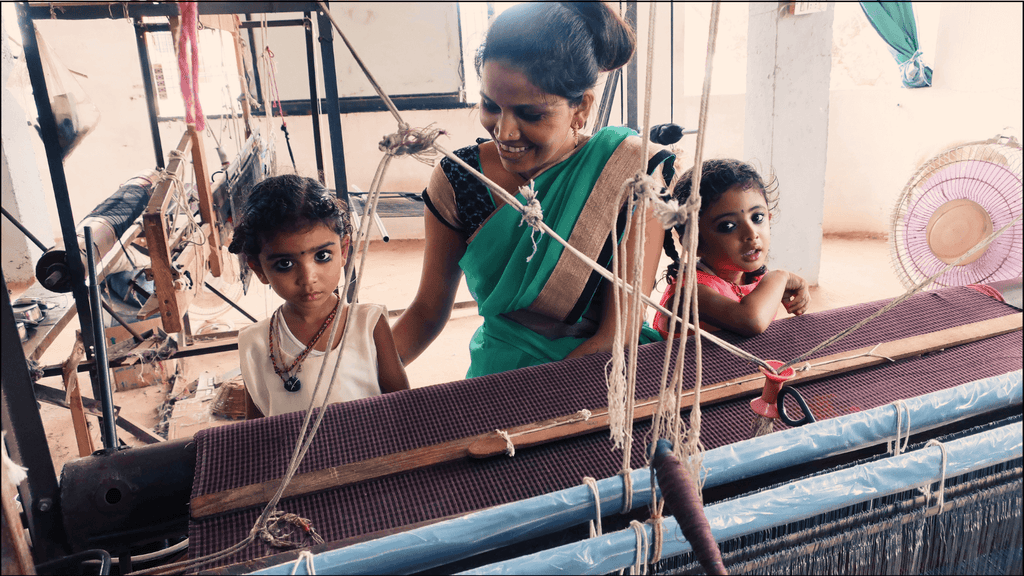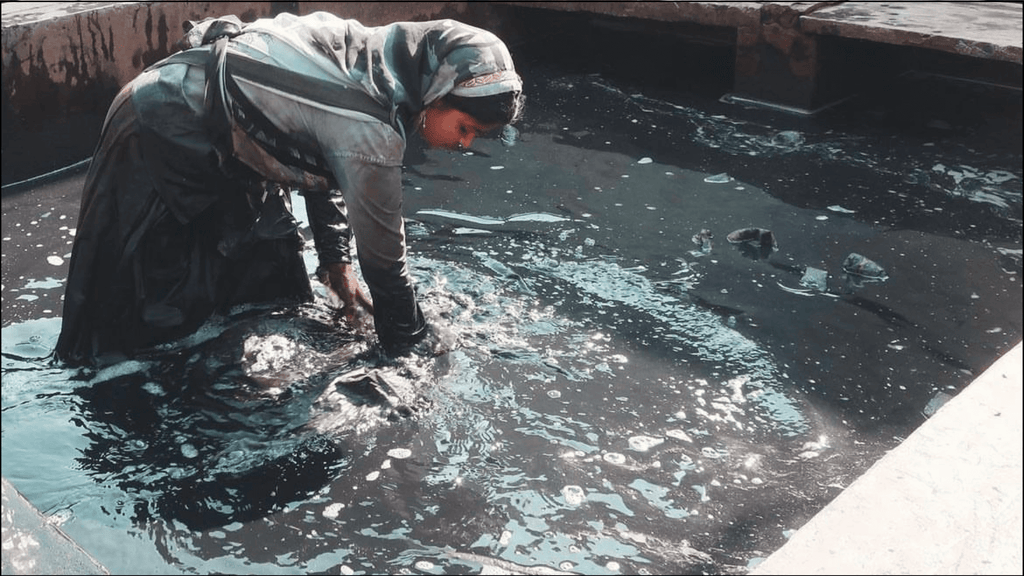job creation

reduced carbon footprint
the apparel industry uses 132 tons of coal per year weaving fabric
khadi uses none
water conservation
no water is used, wasted, or polluted hand spinning and weaving khadi
Khadi is a labor-intensive process of creating hand-spun yarns and then hand weaving them into fabrics. Khadi first became popular in the 1920’s during the Swadeshi Movement. Lead by Mahatma Gandhi, The Swadeshi Movement created Indian nationalism and worked towards independence from the British Empire through peaceful resistance. A cornerstone of the movement was the boycott of British goods, which were then replaced by India made handicrafts. The most infamous of these handicrafts was khadi. In fact, all Indian flags are still required to be made out of khadi fabric to this day.
As industrialization took hold, Khadi became less and less common, with machines replacing skilled workers. We believe a return to traditional manufacturing will not only help the economy but, also individual families and those who depend on its livelihood. By eliminating heavy, pollutive machinery, we are not only reducing the impact on our planet but create local jobs and honor an incredible tradition.
For example, one fossil-fuel fed spinning machine requires only two skilled workers; but, 100 workers are required to hand spin the same quantity of yarn as the machine. The same applies to loom work: Meter-for-meter it takes 10 hand weavers to produce the same amount of fabric as one automatic weaving loom.
Today, at virtue + vice, we are still inspired by Gandhi. We believe that by using alternative manufacturing methods to create jobs, we will reduce environmental impact, and add value to the communities in which our beautiful and lovingly crafted clothes are made.
Our khadi products are each one of a kind. Be sure to take a close look at the yarns and weaving technique. You can see small variations in the width of each yarn, and the density of the fabric, these irregularities are unique to products made by people instead of machines.



Leave a comment